5 Tips on How & When to Prune Lavender
-
Ashley Bates
- Last updated:
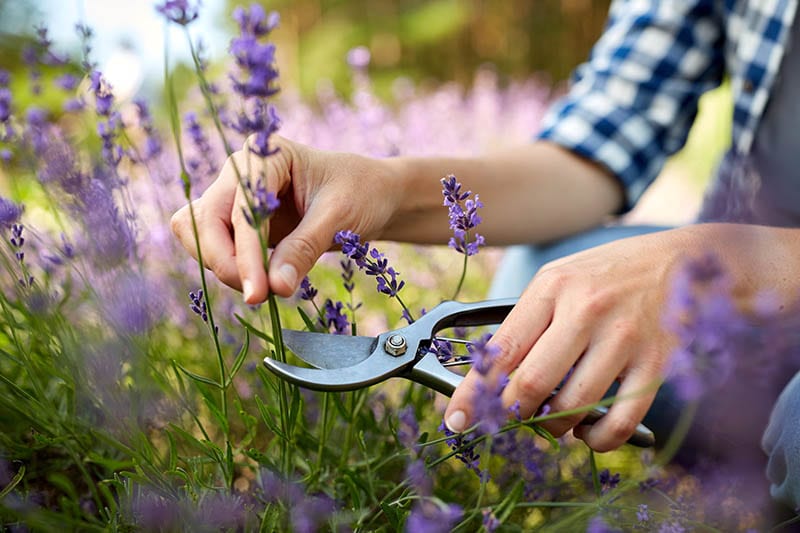
Lavender is a beautiful, fragrant perennial herb that is abundantly popular among gardeners. If you are just now getting into growing lavender, you probably want all the tips on making lavender the most beautiful plant in your garden.
Pruning is essential because it allows you to control your plant’s growth and aesthetics. Here we’re going to go over how you should prune lavender and the best time to do it. Plus, we have some other critical growing tips we think you could really benefit from.
When to Prune Lavender Plants
Ideally, it would help if you prune your lavender plants twice yearly. Most lavender blooms between late spring and late fall. The first time you prune your lavender plants should be after the first flowering. Then, you can try again in late August, after the last flush falls.
The exact time you should prune your lavender plant depends greatly on the type of lavender you’re growing. For example, some lavender plants do not bloom at the same time of year. The general rule of thumb here is to prune once they finish blooming and that season.
Some lavender plants do not bloom until late in the fall. Regardless of what plant you have, keep in mind that pruning should take place once you can enjoy the flowers.
How to Prune Lavender in 5 Steps
Once you have all of the basics, pruning your lavender plant should be a breeze. Here are five steps that you need to take with any lavender variety that you may have. Next, we’ll go over the different pruning methods depending on the type of lavender species you’ve selected for your garden space.
If you have more than one type of lavender, always research that specific kind so that you can care for them properly.
1. Prune at the Right Time of Year
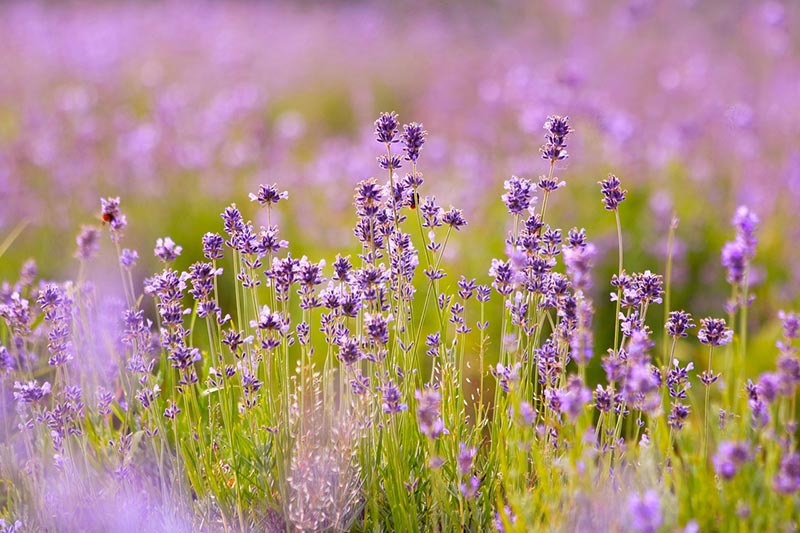
For most lavender plants, you should be able to prune them in late August after they have finished their blooming season. You’ll know when your lavender plant is done flowering because the blooms tend to wither and become much less vibrant.
2. Don’t Cut into Woody Stalks
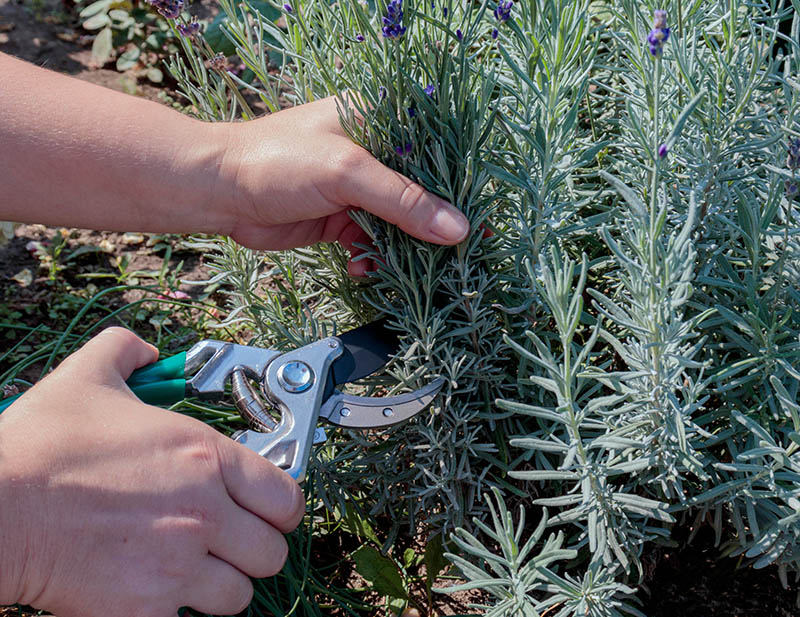
For all types of lavender, be careful not to cut back to the woody part of the plant. Keep the pruning toward the tender parts of the stems. If you cut your lavender plant too far back, you risk killing the entire plant or creating room for infection and disease. Make all cuts clean and in the correct place.
3. Cut Roughly ½ Way Back

As a general rule, you should cut about half the height of the plant leaving any green parts completely intact. This leaves new room for growth to develop in the following seasons to promote optimal health for your plants.
4. Make It Even
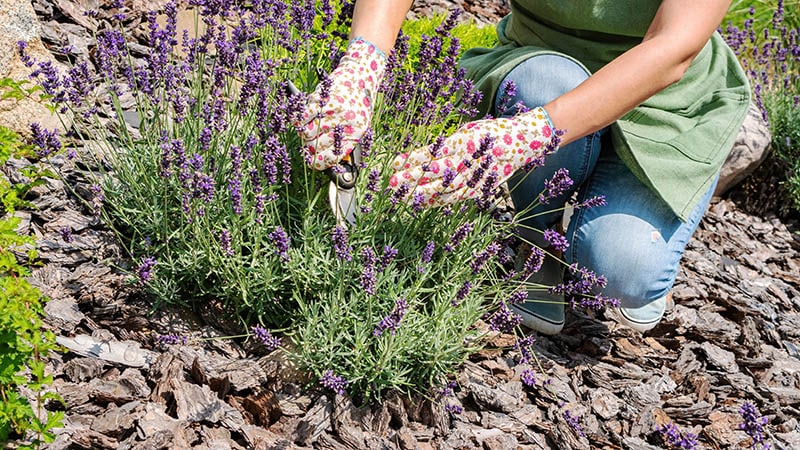
When you’re pruning, you should cut a very rounded shape to create an aesthetically pleasing appearance that will grow extremely healthy the following year.
5. Don’t Trim Too Early or Late
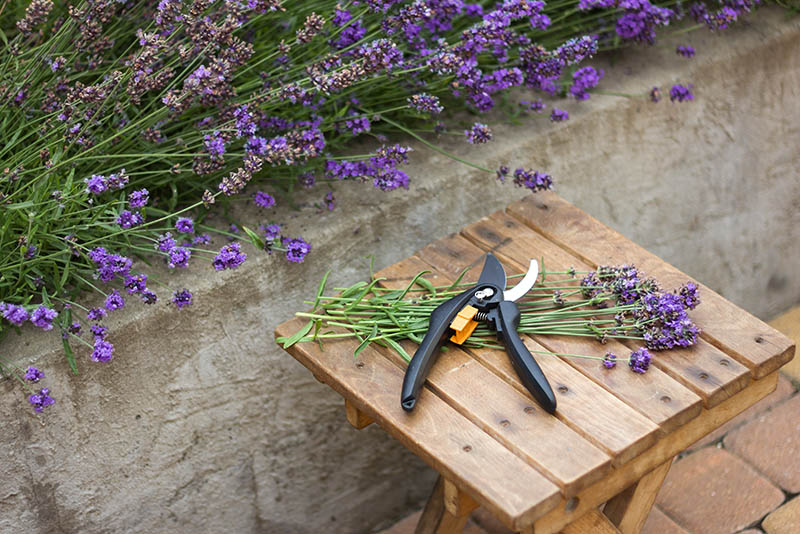
Trimming your lavender plants at the right time every year is crucial. Once you prune for the first several years, it will be very second nature to you, and you will know exactly what your plants require. But at first, it can be tricky to learn the prime time for pruning.
The type of lavender plant you have says a lot, so make sure you’re pruning according to the specific lavender species you’ve selected.
Types of Lavender: What’s the Difference?
If this is your first year growing lavender, you might not know much about the different varieties and the care that they require. Pruning won’t change drastically depending on the type of lavender that you have, but there are specific considerations you have to keep in mind.
English Varieties
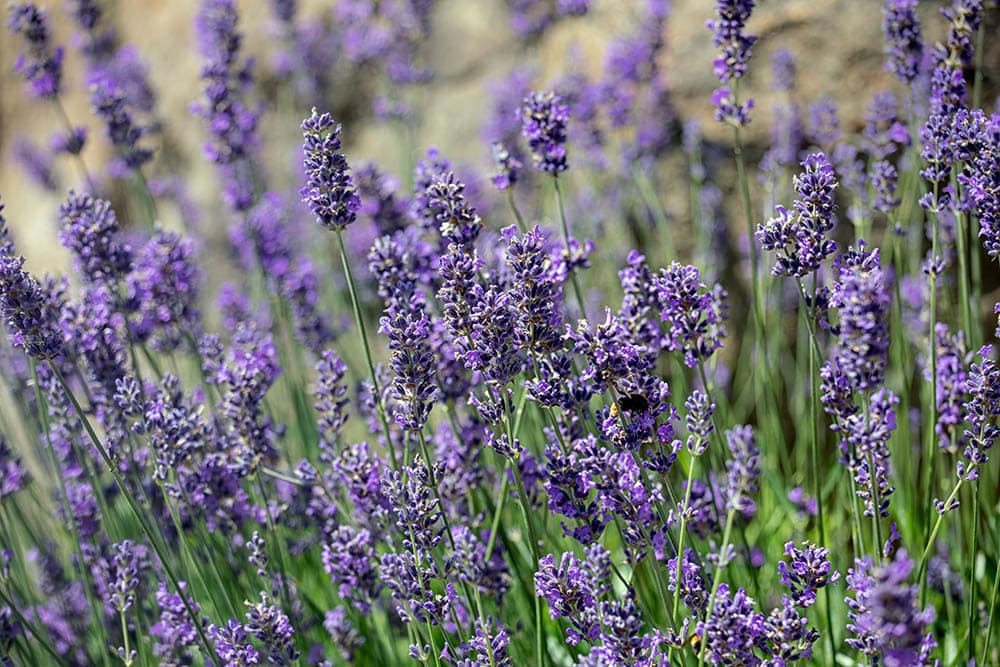
English lavender varieties are extremely hardy and simple to prune. You don’t have to worry a lot about killing the plant as they are very capable of withstanding mistakes. However, you’ll naturally want to ensure that you prune them correctly the first time to promote optimal growth.
With English varieties, you can prune twice yearly – once after the first flowering and again in late fall. Pruning will make English varieties their healthiest and most aesthetically pleasing twice a year.
English Hybrid Varieties

If you are pruning English hybrids, they are less adaptable than standard English varieties but not as finicky as the tufted types of lavender. You have to take care when you are pruning these types of lavender, making sure not to cut back into the woody parts.
Tufted Lavender Varieties (Non-English)
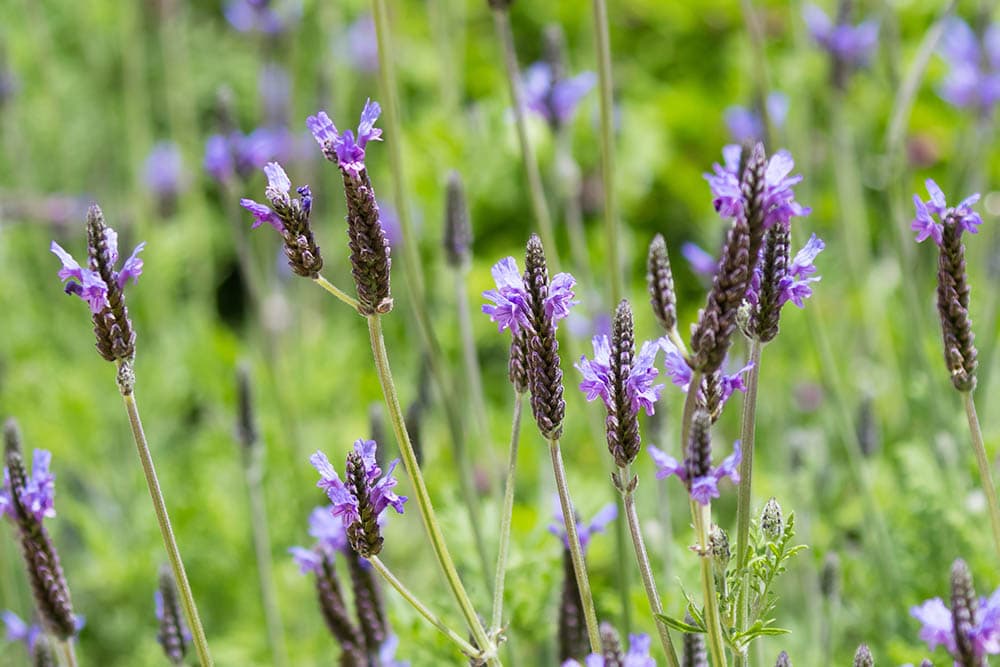
For non-English types of lavenders, such as French, Spanish, or wooly lavender, there’s a bit of difference. First, these lavenders tend to be a lot more sensitive to handling in their environment. They require gentle handling, so trim them properly with care.
You should give them a gentle trim after the first flush of flowers fades, and make sure not to cut them back too far as it can kill the entire plant. Once you perform this pruning session, simply deadhead the lavender plant for the rest of the season.
Benefits of Pruning
You might not think that pruning your lavender plants is a huge deal, but let us change your mind. Pruning is not an accessory, as lavender will continue to grow yearly. However, if you don’t prune your plants, it can cause the overall look of the lavender to become quite drab, and it might produce fewer fragrant flowers.
If you prune your lavender plants regularly, they will grow evenly and produce gorgeous, aromatic blooms year after year. Pruning is required if you’re looking to get the most out of your lavender plants with both appearance and overall functionality.
Pruning isn’t a difficult process, so don’t be afraid to watch a video of other people pruning their lavender plants to make sure you’re doing it correctly. Here is a really fantastic visual example, so you know exactly what portions of the plan to cut to serve as your general guideline.
Conclusion
So now you know that with English varieties of lavender, you can prune them twice a year at the peak time. For other types of lavender, you should prune them in late August when summer has ended, and fall is beginning.
Make sure not to trim too early or late in the season to ensure proper growth and abundant flowering. Always make sure to prune based on the type of lavender you’ve selected for your garden space, and treat them differently if you have multiple species.
Featured Image Credit: Ground Picture, Shutterstock
Contents

